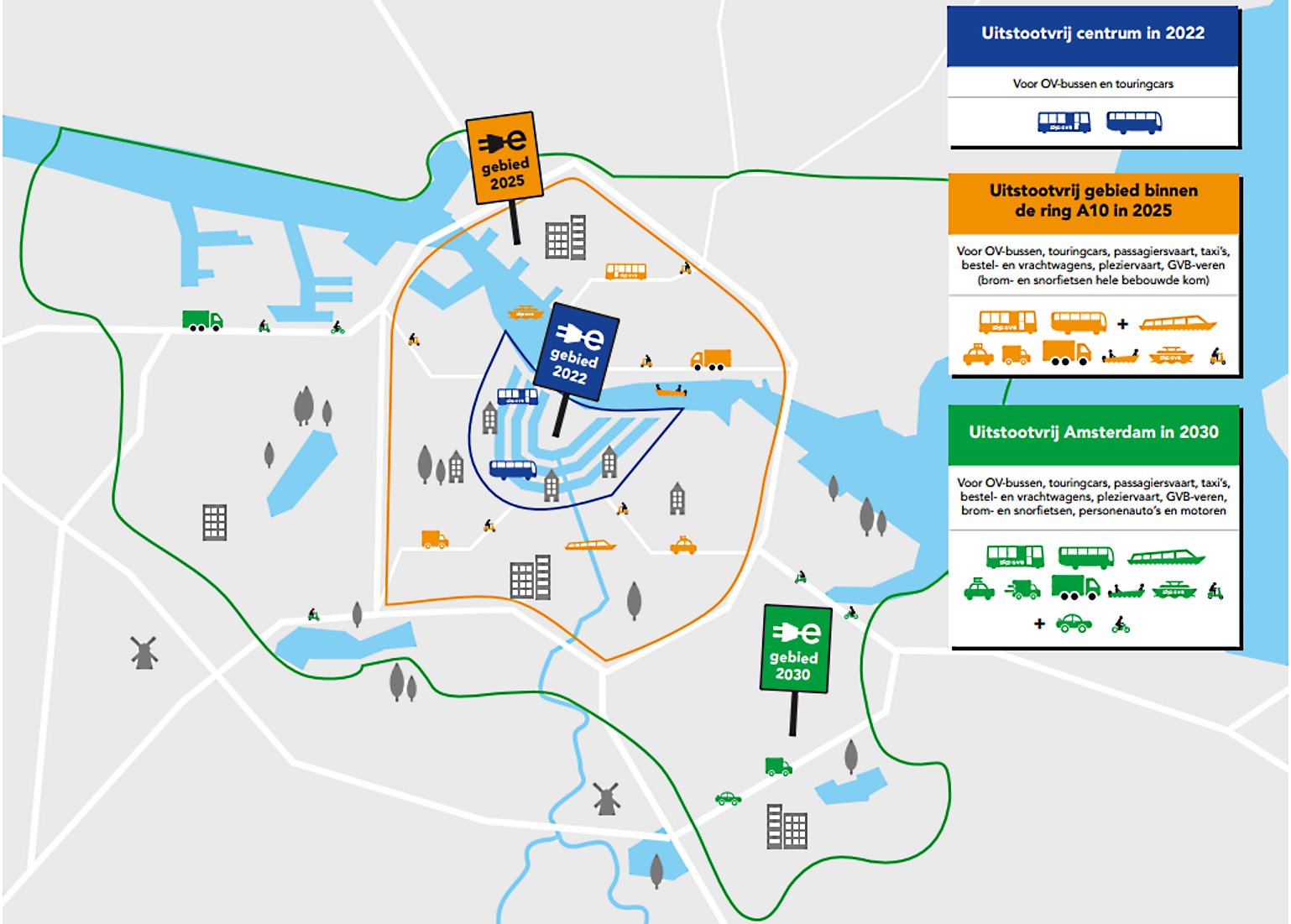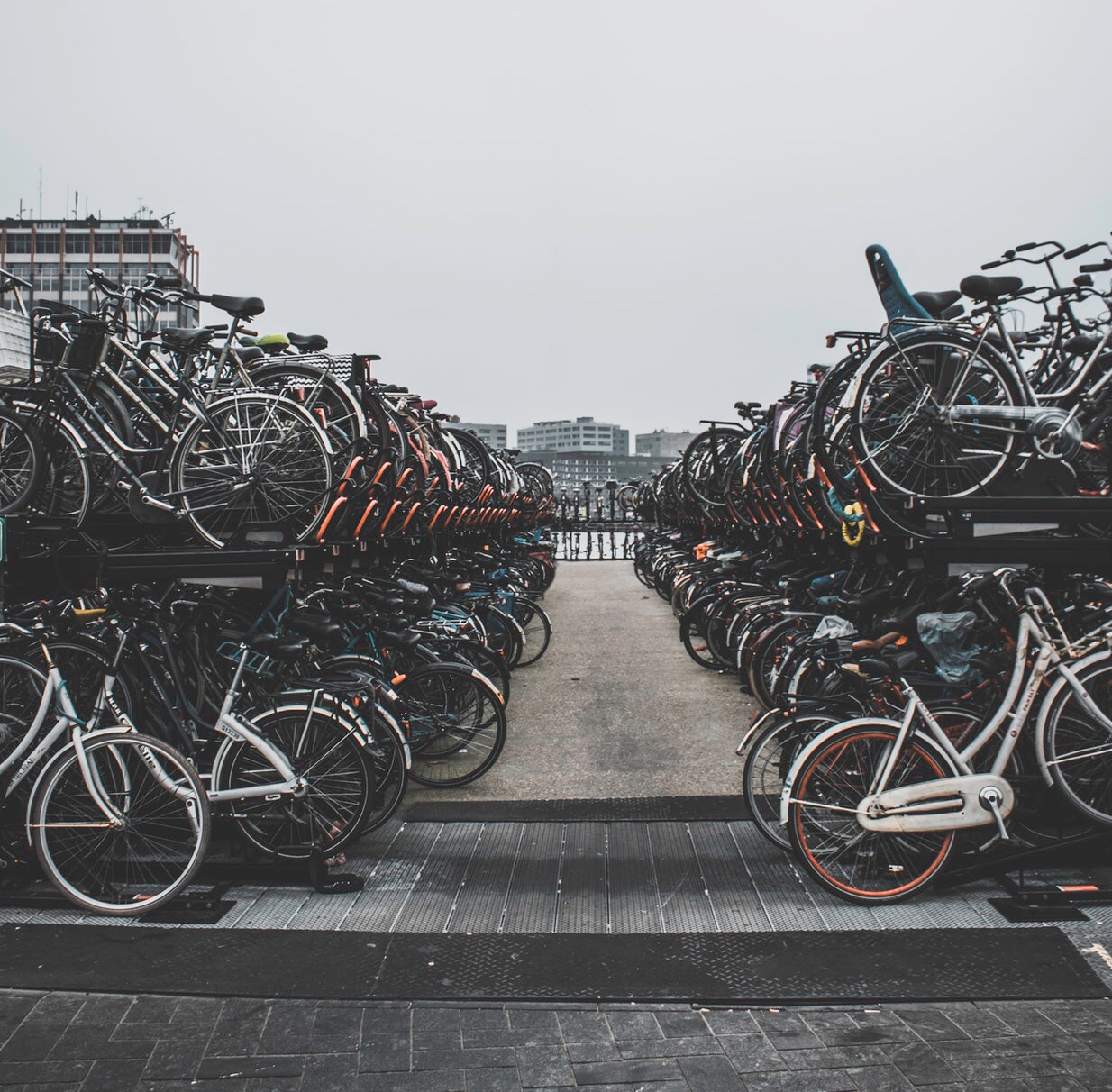
- Sustainable Planet -
- 5mins -
- 794 views
Amsterdam Announces Plans to Ban All Non-Electric Vehicles by 2030
The Dutch capital just announced plans to replace all gasoline and diesel-powered cars and motorcycles with electric vehicles in a bid to address shocking rates of air pollution in the city.
Amsterdam to ban polluting vehicles from 2030
Gasoline and diesel fueled cars and motorcycles will be banned from Amsterdam from 2030 in a bid to address unhealthy and alarming rates of air pollution in the city due to high traffic.
Air quality in the Netherlands is worse than EU rules allow
Despite the widespread use of bicycles as a primary mode of transport by many Dutch citizens, air pollution in the Netherlands is worse than European rules permit, and this is mainly due to heavy traffic in the larger cities of Amsterdam and Rotterdam.
The Dutch health ministry has warned that current levels of nitrogen dioxide and particulate matter emissions can lead to respiratory illnesses, with chronic exposure shortening life expectancy by more than a year.
Amsterdam Council said earlier this month that it aims to replace all gasoline and diesel engines by emission-free alternatives, such as electric and hydrogen cars, by the end of the next decade.
It will start next year by banning diesel cars built before 2005 from the city, and will gradually expand the range of vehicles that are barred.
The city council said it will use subsidies and parking permits to incentivise people to switch to cleaner vehicles.
However, not everybody is overjoyed at the plans, and there has been a push-back by the country’s auto lobby (see below).
Source: Reuters

Phases of the Proposed Ban
The proposed Amsterdam ban will gradually phase in over the next decade, expanding outwards from the city’s central core to include all areas inside the A10 ring road and then spreading further, whilst gradually incorporating more vehicle types. It will ultimately include canal boats and other watercraft, as well as all road vehicles.
- From 2020, any diesel older than Euro 4 (~15 years and older) will be excluded from the zone inside the A10 ring road (indicated in yellow on the above map).
- From 2022, all public buses and coaches operating in the inner city center (indicated in blue) must be emissions-free, and any other vehicle entering this central area must be at least Euro 6 compliant (~2015 or newer).
- From 2025, the emissions-free zone will expand to the A10 ring road, and encompass more vehicle classes, including trucks and delivery vans, taxis, and some moped types. Also restricted to zero emissions will be pleasure craft and public transport ferries.
- By 2030, all vehicles that are not emissions-free will be excluded from all built-up areas of the city (indicated in green), including all private cars and 2-wheelers.
More EV charging points will be set up to encourage the transition, with owners of EVs able to request new charge points to be installed in their locale if they are not already present.
Some purchase incentives are also proposed to help residents switch to zero emissions vehicles, though the exact details of these are not yet clear.
The plans will be discussed though June and July, with consultations from residents and businesses.
Source: CleanTechnica

Dutch Auto Lobby Pushes Back Against Ban with Misinformation
As might be expected given the now well-known reluctance of automakers to transition their businesses away from fossil-burning vehicles, one of the industry’s main proponents, the Dutch RAI Association, has come out strongly against Amsterdam’s plans:
“A bizarre plan, beyond all reality and unfeasible… Many tens of thousands of families who have no money for an electric car will soon be left out in the cold. That makes Amsterdam a city of the rich. In 2030, about one-third of the cars will be electric, we expect. But there will also be a lot of people who won’t be able to afford that by then.” (translation)
However, what they neglect to mention is that there will be a huge number of affordable used EVs on the Dutch market by 2030, which will offer much better overall value than fossil vehicles, especially to those on a tight budget.
With added EV incentives from the Amsterdam government, the transition to an EV will be an easy and obvious choice.
Despite the RAI’s desperate claims, it is far more likely that most people on a tight budget will have already made the transition away from expensive fossil fuel burners well before 2030, precisely to save themselves from wasting money.
What the industry is really fearful of is any hastening of the (now inevitable) decline in their traditional “cash-cow” fossil vehicle sales, postulates CleanTechnica.
With such bans of fossil vehicles looming, sensible people are already steering away from the old and polluting technology.
If the industry was really concerned about helping out “Many tens of thousands of families who have no money,” they would have been sincerely pursuing the production of EVs over the past two decades, instead of attempting to bury the technology after smothering it back in the 1990s.
Source: CleanTechnica
Below: The medieval city centre of Pontevedra in Galicia shows it can be done. It has been successfully transformed by policies prioritising pedestrians over cars.
Life in the Spanish city that banned cars
In Pontevedra, the usual cacophony of traffic in a Spanish city has been replaced by the sounds of birds and the conversations of Spaniards.
Mayor of the Galician city, Miguel Anxo Fernández Lores’ philosophy is simple: owning a car doesn’t give you the right to occupy the public space.
“How can it be that the elderly or children aren’t able to use the street because of cars?” asks César Mosquera, the city’s head of infrastructures. “How can it be that private property – the car – occupies the public space?”
So what did they do about it?
- They stopped cars crossing the city and got rid of street parking, as people looking for a place to park is what causes the most congestion.
- They closed all surface car parks in the city centre and opened underground ones and others on the periphery, with 1,686 free places.
- They got rid of traffic lights in favour of roundabouts, extended the car-free zone from the old city to the 18th-century area, and used traffic calming in the outer zones to bring the speed limit down to 30km/h.
The benefits have been numerous:
- On the same streets where 30 people died in traffic accidents from 1996 to 2006, only three died in the subsequent 10 years, and none since 2009.
- CO2 emissions are down 70%, nearly three-quarters of what were car journeys are now made on foot or by bicycle, and, while other towns in the region are shrinking, central Pontevedra has gained 12,000 new inhabitants.
- By withholding planning permission for big shopping centres, it has meant that small businesses – which elsewhere have been unable to withstand Spain’s prolonged economic crisis – have managed to stay afloat.
“In effect, these are everyday public works that have been carried out in the context of a global project, but they cost the same or even less,” says Lores. “We’ve haven’t undertaken grand projects. We’ve done what was within our grasp.”
Hats off to Pontevedra! It clearly can be done, and this Spanish city has proved it!
Source: TheGuardian

